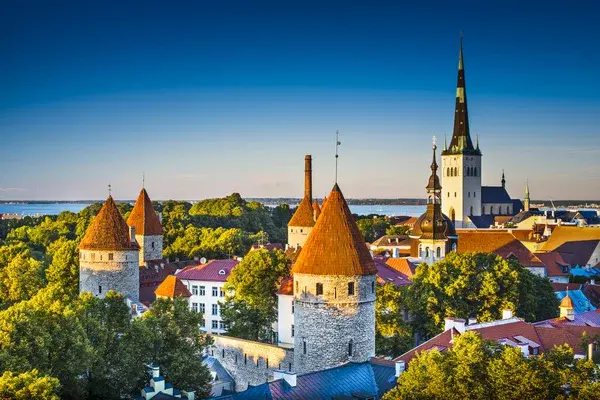by Kaiku
When talking about Uralic languages, you might think of Estonian, Finnish, and Hungarian. But did you know there are actually tens of different languages and even more dialects within the Uralic family? Uralic languages are spoken by over 20 million people, but around 75% of these speakers use just those three well-known languages. Beyond these, there are many lesser-known Uralic languages spoken in North-West Europe and parts of Northern Russia. All Uralic languages can be spread into 6 main groups;
Finnic
Permic
Ugric
Samoyedic
Mordvinic
Mari
Sadly, many Uralic languages are endangered, with some facing the threat of extinction. However, there are institutions, universities, and communities working to preserve and revive these languages, ensuring they don’t disappear completely. Efforts to keep them alive include teaching the languages, documenting them, and encouraging their use in daily life in locations where it’s possible.
What Makes Uralic Languages Unique?
One of the most remarkable things about Uralic languages is how they sound. Vowel harmony, a feature where vowels within a word harmonize to sound more fluid, is a key trait of many Uralic languages. This gives them a certain musicality and softness that can be quite appealing to the ear. The complexity of the languages is also noteworthy, especially when it comes to grammar. Uralic languages are known for their large number of noun cases, which are used to indicate different roles of nouns within sentences. For new learners the amount of cases may seem intimidating, but it’s important to remember that a lot of them are not used in everyday life, and there is no need to get deep into the most complicated one unless you are especially interested in the linguistics of Uralic languages.
Due to their special features and beauty of tones, Uralic languages have also influenced art and literature beyond their own regions. For example, J. R. R. Tolkien, the famous author of "The Lord of the Rings," was inspired by Uralic languages when creating the Elvish language. In modern film, the 2019 animated movie "Klaus" features characters who speak North Sámi, another Uralic language, which adds authenticity to its Sámi setting.
Where Do Uralic Languages Come From?
The origins of Uralic languages trace back thousands of years to a language called "Kantaurali," spoken around 6000 years ago by fishing communities in the Western Ural region. Over time, Uralic languages spread across Northern Europe and Russia, interacting with Indo-European languages, especially Slavic.
Significant contact between Finno-Ugric and Slavic languages began around the fifth millennium B.C.E., with key interactions in Russia, where Finno-Ugric speakers live as minorities among Russian speakers, and in Central Europe, where Hungarian interacts with languages like Slovak and Ukrainian. These exchanges led to borrowing of Slavic words and some influence on Uralic phonology and grammar.
As Russian settlements expanded, ethnic fusion and assimilation led to language shifts among Finno-Ugric groups, and with languages like Merya and Muroma it caused them to disappear completely over time. Despite these challenges, Uralic languages continue to be a vital part of the region's linguistic history.
What Does It Mean to Be an Uralic Speaker?
Being part of the Uralic heritage means more than just speaking a language; just like with other groups it also connects people to a unique cultural and historical identity. Although many Uralic languages are at risk of dying out, their speakers hold onto a strong sense of pride in their heritage. Cultural events, festivals, and traditions tied to Uralic languages help keep the identity alive.
For example, many Uralic-speaking communities continue to practice traditional crafts, songs, and dances, which are passed down through generations. Even with the pressures of globalization, these communities work hard to preserve their language and culture.
At the same time, Uralic languages have adapted to modern life. Speakers are increasingly finding ways to use their languages in new settings, whether through social media, literature, or education. This balance between tradition and modernity reflects the resilience of Uralic languages and the people who speak them.
Conclusion
The Uralic language family is a rich and diverse group spoken across regions of Europe and Russia. While many of these languages are lesser-known and endangered, efforts are being made to keep them alive. Learning Uralic languages can open doors to unique linguistic experiences, such as vowel harmony and complex grammar, offering a deeper understanding of language diversity. They also provide access to rich cultural traditions and histories. By learning them, we help preserve not only the languages themselves but also the identities and stories of the communities that speak them.
About Kaiku
Finnish by birth, Polish by address, and multilingual in progress — Kaiku is a creative mind working in IT with a love for art, writing, and culture. Whether illustrating, learning new languages, or analyzing cultural quirks, they’re always searching for fresh perspectives and ideas — best discussed over a good cup of coffee.


